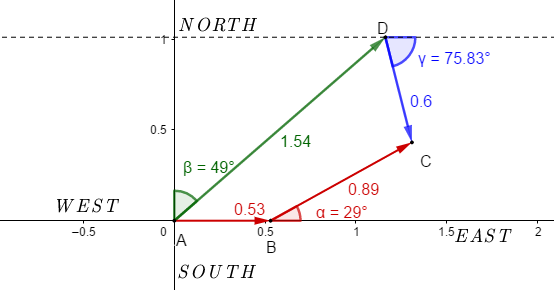Two beetles run across flat sand, starting at the same point. Beetle 1 runs 0.53 m due east, then 0.89 m at 29o north of due east. Beetle 2 also makes two runs; the first is 1.54 m at 49o east of due north. What must be (a) the magnitude and (b) the direction (relative to the east direction in the range of (-180°, 180°)) of its second run if it is to end up at the new location of beetle 1?
Two beetles run across flat sand, starting at the same point. Beetle 1 runs 0.53 m due east, then 0.89 m at 29o north of due east. Beetle 2 also makes two runs; the first is 1.54 m at 49o east of due north. What must be (a) the magnitude and (b) the direction (relative to the east direction in the range of (-180°, 180°)) of its second run if it is to end up at the new location of beetle 1?
Related questions
Question
Two beetles run across flat sand, starting at the same point. Beetle 1 runs 0.53 m due east, then 0.89 m at 29o north of due east. Beetle 2 also makes two runs; the first is 1.54 m at 49o east of due north. What must be (a) the magnitude and (b) the direction (relative to the east direction in the range of (-180°, 180°)) of its second run if it is to end up at the new location of beetle 1?
Expert Solution
Step 1
Given:

The path of the beetle 1 is from A to B to C.
The path of the beetle 2 is from A to D to C.
Trending now
This is a popular solution!
Step by step
Solved in 2 steps with 1 images
